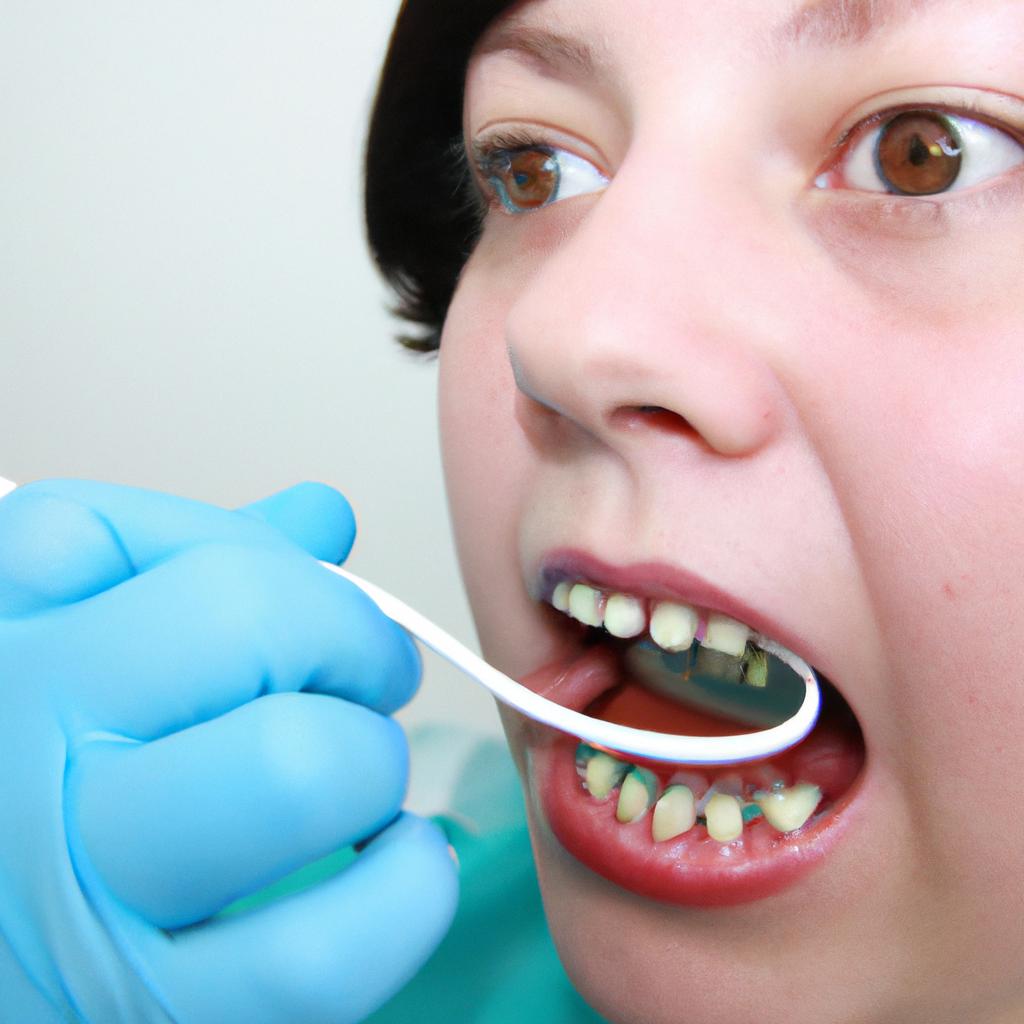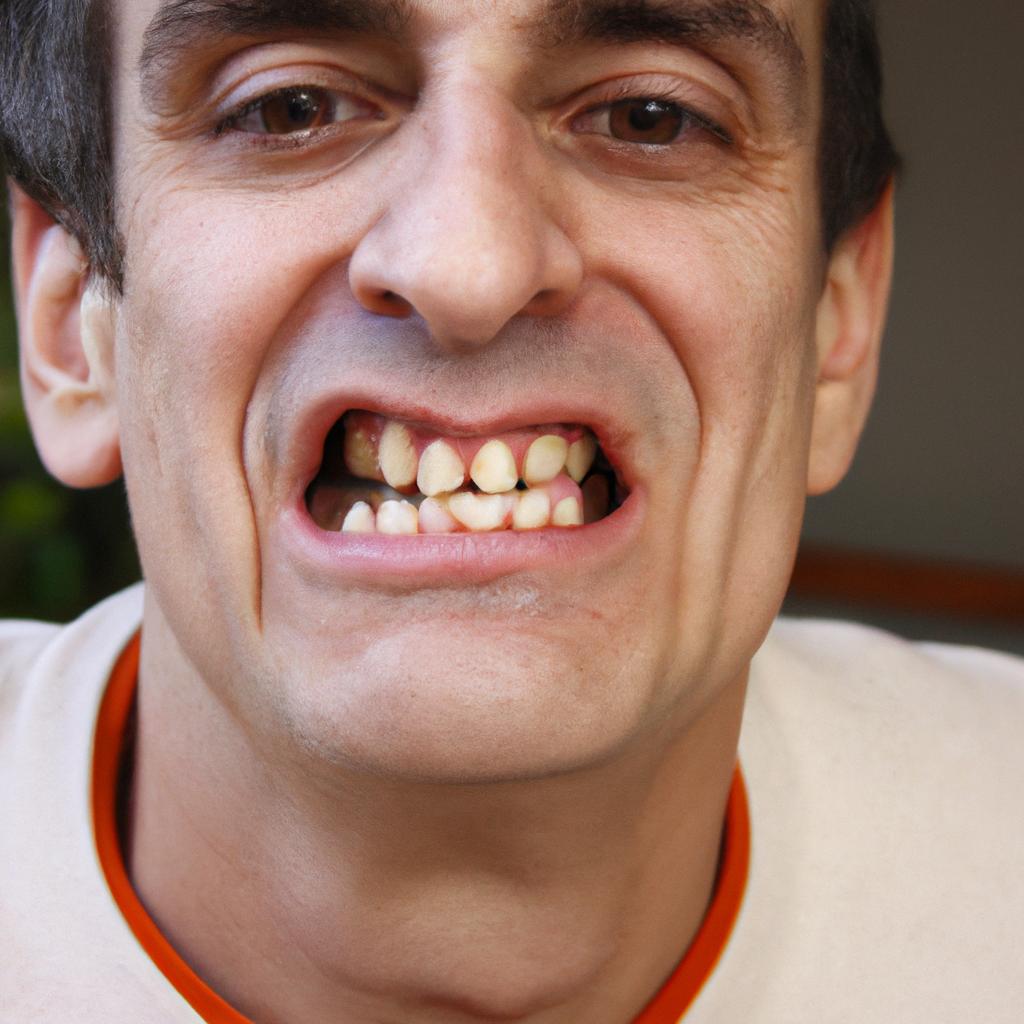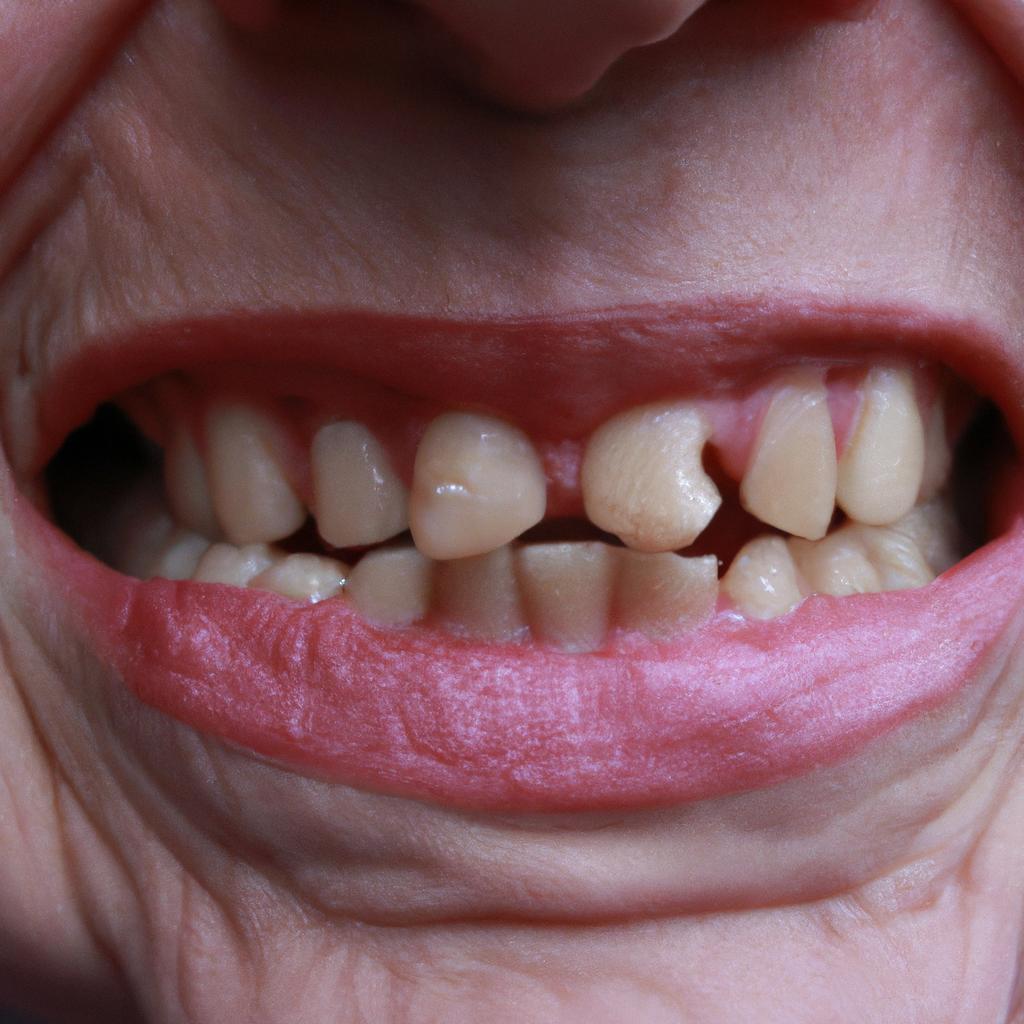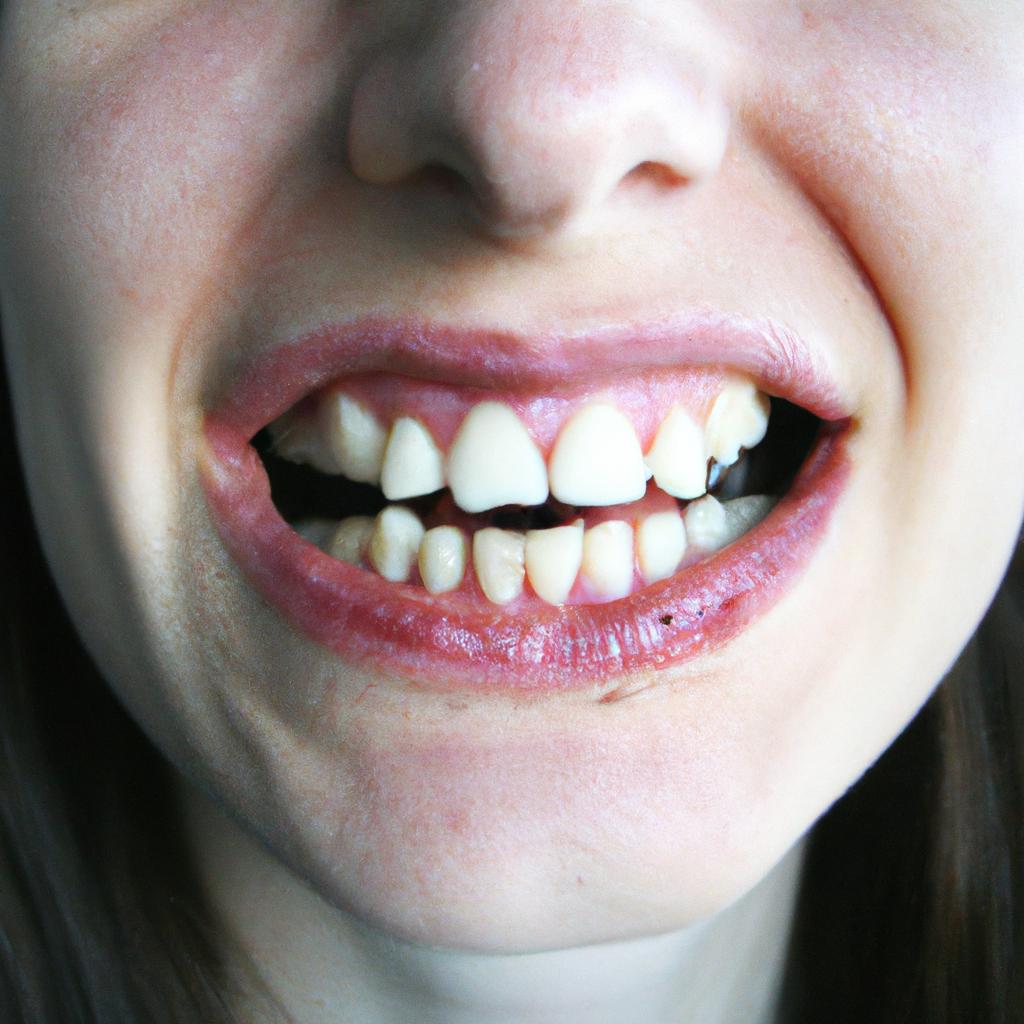Fixed Prosthodontics: A Comprehensive Guide in Prosthodontics Specialty

Fixed prosthodontics is a specialized branch of dentistry that focuses on the restoration and replacement of missing teeth using fixed prostheses. It involves the design, fabrication, and placement of dental crowns, bridges, and implants to restore both function and aesthetics in patients with partial or complete edentulism. For instance, consider the case of Mr. Johnson, a middle-aged man who lost multiple teeth due to severe periodontal disease. With fixed prosthodontic treatment, he was able to regain his ability to chew properly and confidently smile again.
In recent years, there has been a growing interest in fixed prosthodontics as it offers numerous benefits over traditional removable prostheses. Fixed restorations provide enhanced stability, durability, and esthetics compared to their removable counterparts. Furthermore, they can help prevent further bone loss by promoting proper distribution of chewing forces through the remaining teeth or implants. This comprehensive guide aims to explore various aspects of fixed prosthodontics such as treatment planning, materials selection, preparation techniques, impression taking procedures, laboratory steps involved in fabricating prostheses, and considerations for successful long-term maintenance. By delving into these topics, this article seeks to equip clinicians with the knowledge needed to effectively implement fixed prosthodontic treatment in their practice and deliver optimal outcomes for their patients.
When it comes to treatment planning in fixed prosthodontics, a thorough assessment of the patient’s oral health, including the condition of remaining teeth or implants, occlusion, and esthetic considerations, is essential. This evaluation helps determine the most suitable treatment options for each individual case. Factors such as the number and location of missing teeth, the quality and quantity of available bone support, and the patient’s overall oral hygiene habits should be taken into account during this process.
Materials selection is another critical aspect of fixed prosthodontics. Various materials are available for fabricating crowns and bridges, including metal alloys, ceramics, and composite resins. Each material has its own advantages and limitations in terms of strength, aesthetics, biocompatibility, and ease of fabrication. The choice of material should be based on factors such as the specific requirements of the case, patient preferences, budget constraints, and clinician expertise.
Preparation techniques play a crucial role in achieving successful outcomes in fixed prosthodontics. Proper tooth preparation ensures adequate space for the restoration while preserving healthy tooth structure. It involves careful consideration of factors such as axial reduction, occlusal clearance, margin design (e.g., chamfer or shoulder), and finish line placement. Additionally, appropriate isolation techniques must be employed to ensure accurate impressions.
Impression taking procedures are vital for replicating intraoral structures accurately. Traditional impression materials like polyvinyl siloxane (PVS) or polyether are commonly used; however, digital impressions using intraoral scanners have gained popularity due to their convenience and accuracy. Regardless of the technique used, careful attention should be paid to capturing all necessary details to facilitate precise fabrication at the dental laboratory.
The laboratory steps involved in fabricating fixed prostheses include model pouring from impressions, waxing up restorations on stone models or designing them digitally, casting or milling the restorations using appropriate materials, and finally, finishing and polishing the restorations to ensure optimal aesthetics and function.
Successful long-term maintenance of fixed prostheses is crucial for their longevity. Proper oral hygiene practices, regular dental check-ups, and professional cleanings are necessary to prevent complications such as peri-implantitis or secondary caries. Patients should also be educated on dietary habits that minimize the risk of fracture or damage to the restorations.
In conclusion, fixed prosthodontics offers a comprehensive approach to restoring missing teeth with long-lasting and aesthetically pleasing results. By understanding the various aspects involved in treatment planning, materials selection, preparation techniques, impression taking procedures, laboratory steps, and maintenance considerations, clinicians can provide effective fixed prosthodontic treatment options for their patients.
Definition and Scope of Fixed Prosthodontics
Definition and Scope of Fixed Prosthodontics
Fixed prosthodontics is a specialized branch of dentistry that focuses on the design, fabrication, and placement of artificial dental restorations to replace missing teeth. These restorations are permanently fixed in the patient’s mouth using various techniques and materials, providing both functional and aesthetic benefits. To illustrate the significance of fixed prosthodontics, consider the case of a middle-aged individual who has lost several anterior teeth due to trauma. The resulting gaps not only compromise their ability to chew and speak but also negatively impact their self-confidence and overall quality of life.
The scope of fixed prosthodontics encompasses an array of treatment options tailored to each patient’s unique needs. This includes porcelain-fused-to-metal crowns (PFMs), all-ceramic crowns, metal-free zirconia restorations, and implant-supported prostheses. Each option offers distinct advantages based on factors such as esthetics, durability, strength, and cost-effectiveness. Furthermore, advancements in digital technology have revolutionized this field by enabling computer-aided design/computer-aided manufacturing (CAD/CAM) systems for precise restoration fabrication.
In understanding the importance of fixed prosthodontics in oral rehabilitation, it is crucial to recognize its potential impact beyond mere functionality. Aesthetic considerations play a significant role in restoring patients’ smiles and improving their psychological well-being. For instance:
- Enhanced appearance: Dental restorations can effectively replicate natural tooth color, shape, and alignment.
- Boosted self-esteem: By closing gaps or replacing damaged teeth with lifelike substitutes, patients regain confidence in their smile.
- Improved social interactions: Restoring a complete set of teeth enables individuals to interact without feeling self-conscious about their dental condition.
- Long-term oral health preservation: Fixed prostheses provide stability to adjacent teeth while preventing further complications like occlusal imbalances or temporomandibular joint disorders.
Table: Common Types of Fixed Prosthodontics Restorations
| Restoration Type | Material Composition | Advantages |
|---|---|---|
| Porcelain-fused-to-metal (PFM) crowns | Porcelain fused to metal alloy | Excellent strength and durability, esthetic versatility |
| All-ceramic crowns | Ceramic materials | Exceptional natural appearance, biocompatible |
| Metal-free zirconia restorations | Zirconium dioxide ceramic | High strength, superior aesthetics |
| Implant-supported prostheses | Titanium implant, porcelain crown | Mimic natural teeth functionally and aesthetically |
As we delve into the subsequent section on “Types of Fixed Prosthodontics Restorations,” it becomes evident that understanding the definition and scope is vital in comprehending the diverse treatment options available. By providing patients with functional, aesthetic, and psychological benefits through customized dental restorations, fixed prosthodontics plays a pivotal role in restoring oral health and enhancing overall well-being.
Types of Fixed Prosthodontics Restorations
Types of Fixed Prosthodontics Restorations
Now that we have established the definition and scope of fixed prosthodontics, let us delve into the different types of restorations commonly used in this field. To illustrate the practical application, consider a hypothetical case study involving a patient who has lost multiple teeth due to periodontal disease. The goal is to restore their oral function and aesthetics using fixed prosthodontics.
There are several types of fixed prosthodontic restorations available, each with its own unique characteristics and indications. These include:
-
Dental Crowns: Also known as caps, dental crowns are tooth-shaped coverings that encase damaged or weakened teeth, restoring their strength and appearance. They can be made from various materials such as porcelain-fused-to-metal (PFM), all-ceramic, or metal alloys.
-
Fixed Dental Bridges: Bridges are used to replace missing teeth by anchoring artificial teeth (pontics) between natural teeth or dental implants. This restoration requires support from adjacent healthy teeth or implants on either side of the edentulous area.
-
Implant-Supported Crowns and Bridges: Implant-supported restorations involve surgically placing dental implants into the jawbone to serve as artificial tooth roots. These implants provide stable foundations for attaching individual crowns or bridges, offering a long-lasting solution for single or multiple missing teeth.
-
Veneers: Veneers are thin shells made of porcelain or composite resin that are bonded to the front surface of anterior teeth to enhance their color, shape, size, or alignment. They can dramatically improve smile aesthetics while preserving most of the natural tooth structure.
| Restoration Type | Indication | Advantages | Disadvantages |
|---|---|---|---|
| Dental Crowns | Severely damaged teeth | Restores tooth strength and shape | Requires significant tooth reduction |
| Fixed Dental Bridges | Multiple missing teeth | Restores oral function | Depends on support from adjacent healthy teeth |
| Implant-Supported | Single or multiple | Provides stable long-term solution | Surgical procedure, higher cost |
| Crowns/Bridges | missing teeth | ||
| Veneers | Aesthetic improvements | Minimally invasive procedure | Irreversible removal of enamel |
In summary, fixed prosthodontics offers a range of restorative options to address various dental conditions. The choice of restoration depends on factors such as the extent of tooth loss, aesthetic goals, and patient preferences. Understanding these different types of fixed prosthodontic restorations is crucial for clinicians when formulating treatment plans tailored to individual patients.
Transitioning into the subsequent section about “Advantages and Disadvantages of Fixed Prosthodontics,” it is important to consider both the benefits and potential drawbacks associated with these restorations. By weighing their advantages against any limitations, one can make informed decisions regarding treatment strategies in prosthodontics specialty.
Advantages and Disadvantages of Fixed Prosthodontics
In the previous section, we explored various types of fixed prosthodontics restorations. Now, let us delve deeper into the advantages and disadvantages associated with this treatment modality.
Imagine a scenario where a patient presents with missing teeth in their posterior region due to severe periodontal disease. The dentist suggests considering fixed prosthodontics as a viable option for rehabilitation. This hypothetical case highlights the importance of understanding both the benefits and drawbacks of fixed prosthodontics before making an informed decision.
Advantages:
- Improved aesthetics: Fixed prostheses can provide natural-looking replacements for missing teeth, enhancing patients’ smiles and overall facial appearance.
- Enhanced functionality: By restoring proper occlusion and masticatory function, fixed prosthodontics enable patients to regain full chewing ability, leading to improved digestion and overall oral health.
- Durability: High-quality materials used in fixed prosthodontics, such as porcelain or metal alloys, offer long-lasting results when properly maintained.
- Speech improvement: Missing teeth can affect speech clarity. Fixed prostheses help restore appropriate tongue placement during speaking, resulting in better articulation.
Disadvantages:
| Challenge | Explanation |
|---|---|
| Time-consuming process | Fabricating fixed prostheses requires multiple appointments spanning several weeks or months. |
| Irreversible procedure | Once prepared and cemented, removing fixed prostheses is not possible without damaging tooth structure. |
| Increased cost | Compared to removable dentures, fixed prosthodontics typically involve higher initial costs due to laboratory fees and material expenses. |
| Oral hygiene maintenance | As compared to natural teeth, cleaning around artificial crowns or bridges demands meticulous oral hygiene practices to prevent plaque accumulation and gum inflammation. |
Considering these advantages and disadvantages will allow patients to make an informed decision about whether fixed prosthodontics is suitable for their specific needs. In the subsequent section, we will explore the step-by-step procedure for fabricating fixed prosthodontics restorations.
Step-by-Step Procedure for Fabricating Fixed Prosthodontics
Fixed prosthodontics offers a range of advantages and disadvantages that must be considered when determining the most suitable treatment option for patients with missing teeth. To illustrate, let us consider a hypothetical case study of a 45-year-old patient who has lost two anterior teeth due to trauma.
One clear advantage of fixed prosthodontics is its ability to provide excellent aesthetics. In our case study, the patient’s smile can be restored seamlessly using porcelain crowns or bridges, blending harmoniously with the remaining natural teeth. This not only enhances the patient’s self-confidence but also improves facial harmony and overall appearance.
Additionally, fixed prosthodontics promotes functional rehabilitation. By replacing missing teeth, it restores proper occlusion and allows for normal speech and mastication. The patient in our case study would regain the ability to chew food comfortably without any restrictions, leading to improved digestion and better oral health.
However, it is important to acknowledge some potential disadvantages associated with fixed prosthodontics as well. Firstly, this treatment requires irreversible tooth preparation, which means healthy tooth structure may need to be removed during the process. Moreover, there is always a risk of complications such as pulpitis or root canal therapy following extensive tooth reduction.
To further explore both sides of this topic, let us examine a list contrasting the advantages and disadvantages:
Advantages:
- Enhanced aesthetic outcome
- Improved functionality for speaking and eating
- Increased self-esteem
- Restored facial harmony
Disadvantages:
- Irreversible tooth preparation
- Potential for post-treatment complications
- Higher cost compared to removable alternatives
To summarize, fixed prosthodontics presents numerous advantages including aesthetic improvement and functional restoration; however, it also carries certain drawbacks like irreversible tooth preparation and possible complications. With these factors in mind, clinicians must carefully weigh the pros and cons before recommending fixed prosthetic solutions to their patients.
Moving forward, the next section will explore the step-by-step procedure for fabricating fixed prosthodontics. By understanding this process, dental professionals can ensure a comprehensive approach to achieving successful outcomes in restorative dentistry and prosthetics.
Maintenance and Longevity of Fixed Prosthodontics
Section H2: Maintenance and Longevity of Fixed Prosthodontics
Imagine a scenario where a patient has recently undergone the fabrication of fixed prosthodontics, such as dental bridges or crowns. After completing the step-by-step procedure for fabricating these restorations, it is crucial to focus on maintenance and ensuring their longevity. This section will delve into various aspects related to maintaining fixed prosthodontics in optimal condition.
To begin with, regular oral hygiene practices play a vital role in preserving the integrity of fixed prosthodontics. Patients should be educated about proper brushing techniques using soft-bristled toothbrushes and non-abrasive toothpaste. Additionally, incorporating interdental cleaning methods like flossing or using interdental brushes can help remove plaque and debris from hard-to-reach areas around the restorations.
Another significant aspect of maintenance lies in routine dental visits for professional cleanings and examinations. These appointments enable dentists to assess the stability and function of fixed prostheses while identifying any signs of potential complications early on. Regular check-ups also allow for necessary adjustments or repairs that may be required due to wear, fractures, or changes in occlusion.
To ensure patients are well-informed about caring for their fixed prosthodontics at home, here are some key points to consider:
- Avoid biting down on hard objects such as ice cubes or pens.
- Refrain from chewing sticky foods that could potentially dislodge or damage the restorations.
- Be mindful when consuming highly pigmented substances (e.g., coffee, tea) that might stain not only natural teeth but also the artificial components of fixed prostheses.
- If experiencing discomfort or noticing any abnormalities, promptly seek professional advice rather than attempting self-adjustments or modifications.
Emphasizing preventive measures can greatly contribute to prolonging the lifespan of fixed prostheses. The table below provides an overview of common issues that may arise and corresponding preventive strategies:
| Issue | Preventive Strategy |
|---|---|
| Plaque accumulation | Regular brushing, flossing, and professional cleanings |
| Fractures or chipping | Avoid biting on hard objects; wear a nightguard if necessary |
| Marginal leakage | Proper cementation techniques during fabrication |
| Soft tissue irritation | Adequate oral hygiene practices |
In summary, the maintenance and longevity of fixed prosthodontics rely on patient compliance with oral hygiene routines, regular dental visits for professional care, and adherence to recommended precautions. By following these guidelines, individuals can minimize the risk of complications and ensure their prosthetic restorations serve them well in the long run.
As advancements continue to shape the field of prosthodontics, it is essential to explore emerging trends that offer potential improvements in fixed prosthodontic treatments. The subsequent section will delve into these innovative approaches aimed at enhancing patient outcomes.
Emerging Trends in Fixed Prosthodontics
Section H2: Emerging Trends in Fixed Prosthodontics
As the field of fixed prosthodontics continues to evolve, new trends and advancements are constantly emerging. These developments aim to enhance patient outcomes, improve treatment predictability, and address the evolving needs of patients. One such trend is the use of digital technology in designing and fabricating fixed prostheses.
Digital dentistry has revolutionized the way fixed prostheses are created. By utilizing advanced software programs and intraoral scanning devices, dental professionals can now obtain highly accurate 3D images of a patient’s oral cavity. This eliminates the need for traditional impression materials, providing a more comfortable experience for patients while also reducing errors associated with conventional techniques.
Moreover, digital workflows offer enhanced precision in design and fabrication processes. With computer-aided design (CAD) software, clinicians can create virtual models of restorations with intricate details that were previously challenging to achieve manually. Subsequently, these designs can be transferred to computer-aided manufacturing (CAM) systems or 3D printers for fabrication using high-quality materials.
In addition to digital technologies, other emerging trends include:
- The utilization of novel materials with improved aesthetics and durability.
- Minimally invasive approaches that preserve tooth structure while achieving optimal esthetics.
- Collaborative interdisciplinary treatment planning involving various dental specialties.
- Increased emphasis on patient-centered care through better communication and shared decision-making.
To illustrate the impact of these trends, let us consider an example scenario where a patient requires extensive rehabilitation due to multiple missing teeth resulting from trauma. In this case, digital technology allows for precise implant placement guided by virtual surgical templates based on CBCT scans. CAD/CAM-fabricated zirconia crowns provide superior strength and natural-looking aesthetics. Minimal preparation techniques combined with orthodontic alignment ensure minimal invasion into sound tooth structure during rehabilitation.
Table: Benefits of Emerging Trends in Fixed Prosthodontics
| Trend | Benefits |
|---|---|
| Utilization of digital technology | Enhanced accuracy and patient comfort |
| Novel materials with improved aesthetics | Superior esthetics and restoration durability |
| Minimally invasive approaches | Preservation of tooth structure while achieving goals |
| Collaborative interdisciplinary treatment | Comprehensive care tailored to individual needs |
These emerging trends in fixed prosthodontics demonstrate the ongoing commitment to advancing the field for better patient outcomes. By embracing digital technologies, incorporating novel materials, adopting minimally invasive techniques, and promoting collaborative interdisciplinary teamwork, dental professionals can continue to provide high-quality restorations that meet both functional and aesthetic demands.
Through these advancements, patients can experience improved treatment predictability, enhanced esthetic results, reduced invasiveness, and increased satisfaction. As the field continues to evolve, it is imperative for clinicians to stay updated on these emerging trends and incorporate them into their practice to deliver optimal care for their patients’ oral rehabilitation needs.




